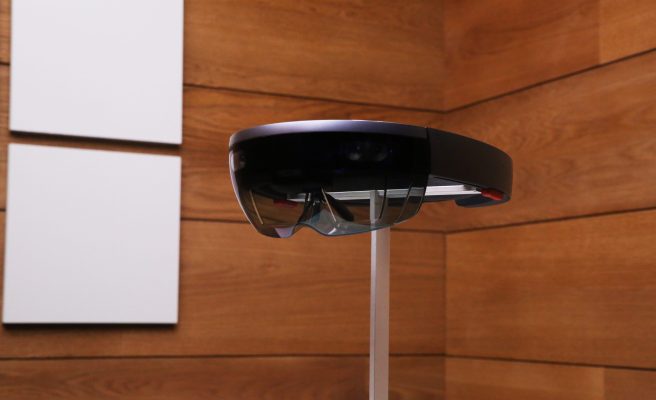Microsoft is readying its HoloLens augmented reality tech for combat. The company just won a $480 million military contract with the U.S. government to bring AR headset tech into the weapons repertoire of American soldiers.
The two-year contract may result in follow-on orders of more than 100,000 headsets according to documentation describing the bidding process. One of the contract’s tag lines for the AR tech seems to be its ability to enable “25 bloodless battles before the 1st battle,” suggesting that actual combat training is going to be an essential aspect of the AR headset capabilities.
“Augmented reality technology will provide troops with more and better information to make decisions. This new work extends our longstanding, trusted relationship with the Department of Defense to this new area,” a Microsoft spokesperson said in a statement sent to TechCrunch.
Magic Leap was also pursuing the contract according to the report in Bloomberg. The military contract bid was perhaps a bit more of a stretch for the company, which has previously maintained that its company’s efforts are focused centrally on consumers. The startup has only recently released its first development kit, while Microsoft’s tech has been in developer hands for more than two years.
Some of the documentation (PDF download) surrounding this bid is intensely interesting and really showcases how extensively the military has researched how augmented reality tech can alter the training and combat environments of soldiers.
Obviously, Microsoft wouldn’t just be planning to take what it’s been selling to factory workers and put it onto a battlefield, but the system requirements outlined in the contract already seem to eclipse what the current generation HoloLens optics are capable of, including items like the device’s FoV, which will have a requirement of between 55 and 110 degrees.
Other stipulations include the device being no heavier than 1.5 pounds and being compatible with existing military helmets. The head-worn device would specifically track weapons and allow soldiers to see simulated fire from their real weapons while offering training with weapons, like Javelin missile systems, in a completely simulated environment.
These are all just early frameworks, but Microsoft now will be developing technologies that keep the U.S. military at the forefront of augmented reality tech, something that will probably be a boon to their enterprise- focused solutions, as well.
